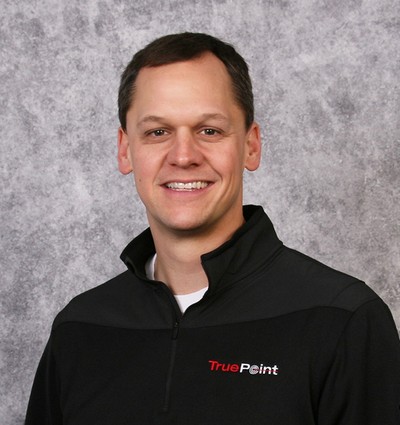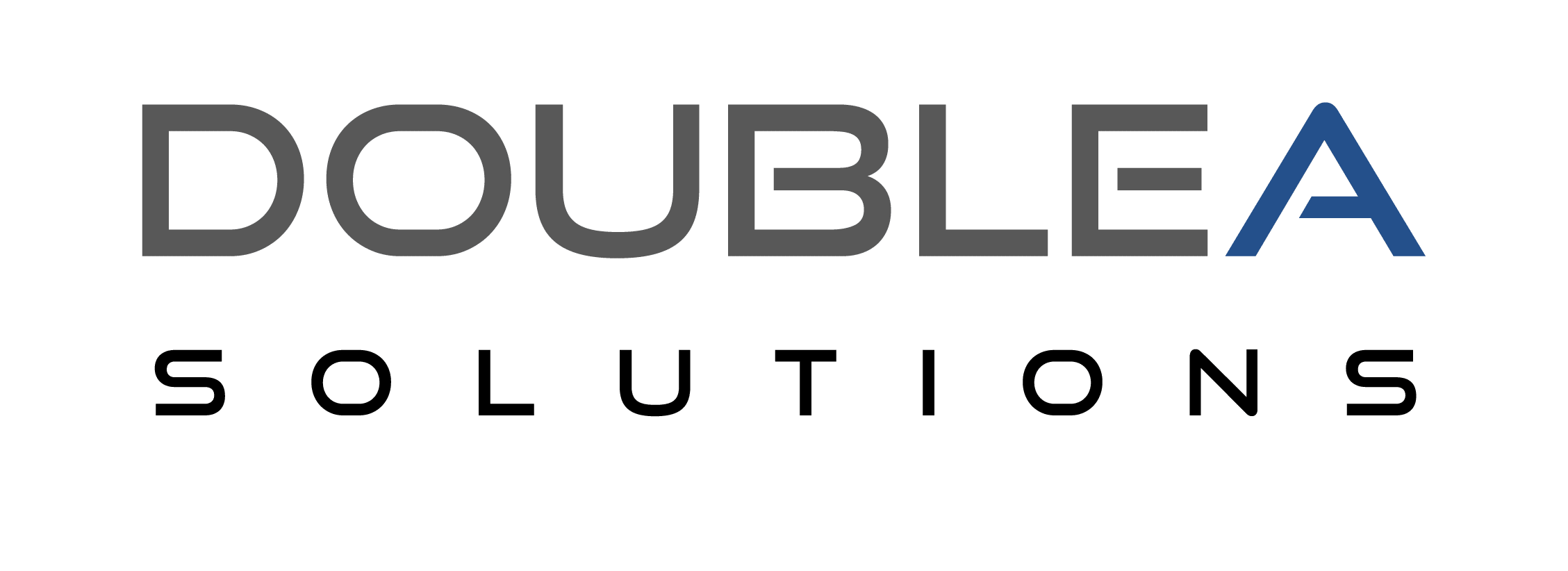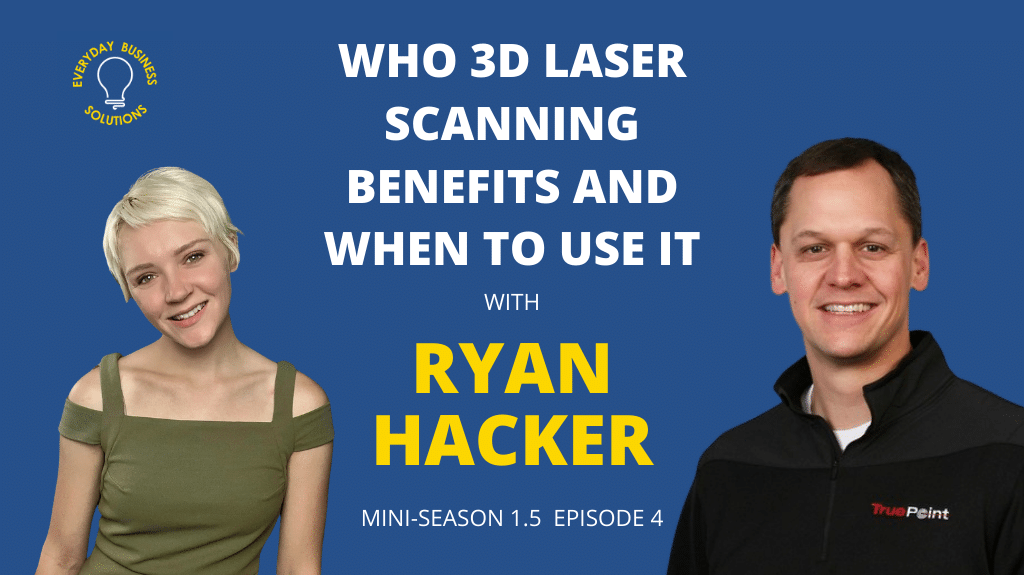In this episode of Everyday Business Solutions and our December mini-season we’re going to be talking about who benefits the most from 3D laser scanning and when to bring it into your project.
Enjoy Listening To How To Have A Proper Work Life Balance on Everyday Business Solutions?
Click Here To Subscribe On Your Favorite Platform!
About Our Guest:

Ryan Hacker
President - TruePoint Laser Scanning
Ryan Hacker is the President of TruePoint Laser Scanning, a 3D laser scanning company based out of Toledo, Ohio who works to bring accurate measurements and data for buildings, sites, plants, machinery, and industrial space straight to those who need it. They service clients in many industries across the United States.
TruePoint Laser Scanning utilizes the latest technology to collect a full set of data in order to ensure they create any type of deliverables that a client may need now or in the future. Data collection involves contact-less, COVID-19-restriction-friendly methods, and are very-non invasive to day-to-day operations.
Episode Transcript:
Halie Morris 0:31
Hello everyone and welcome to Everyday Business Solutions. We are on to episode four of our mini-series today with Ryan Hacker from TruePoint.
Today, we’re gonna dive into a particular part of your business and the architect, engineering, and construction industry, which you mentioned a couple of times throughout our conversation so far. So why has this technology exploded in that industry?
Ryan Hacker 0:57
Yeah, so the AC industry today is characterized by shorter project life cycles, smaller budgets, and growing expectations for accurate demand on data. 3D laser scanning is a solution for AC professionals.
It helps with all of those and whether our clients are actively embracing 3D laser scanning, or they’re on the fence about the technology, we’re able to help them reach their goals.
Some of our clients are relatively new to laser scanning. So we offer comfort and assurance by walking them through the entire process from the pre-planning process through the final deliverables, even sometimes helping them use the deliverables after they’ve gotten them and started to figure some things out.
We can actually go back and show them more things that they can do with them. We really believe this is why we’ve had the opportunity to work with some of the best-known companies in the United States.
Halie 1:57
So out of curiosity, what are some of the companies you’ve worked with?
Ryan 2:01
We’ve worked with companies like Marathon, Owens-Illinois, NASA, Amazon, Apple, Ford, Fox Sports, we’ve actually done work with the NFL, and Major League Baseball. We do a lot of college stadiums.
We’ve worked with Carnival Cruise Lines, Ralph Lauren, Turner construction, Navy, Pier, Gray Core Construction, I’ve done stuff out at the lecture Hotel in Las Vegas. We’ve worked with Disney. We do a lot of theaters around the country as well, all sorts of different projects.
Of course, there’s a ton of other well-known companies that people here probably haven’t heard of but certainly are well recognized within their specific industries as well.
Halie 2:59
It’s cool because I know when we were talking about it, I thought about going into architecture, but I didn’t and so I don’t know a lot about anything on that side.
But you work with a lot of companies that I think many of us recognize very well and some of them are very, very large companies.
Ryan 3:17
Yeah, absolutely. I’d even mentioned that there are companies in the food and beverage world that obviously we all know and things of that sort, but yeah, there’s a ton of really neat companies that we’ve had the opportunity to work with.
I’ve been to places that I never thought I would ever get to see because we’re in their facility scanning. Typically, you’re never going to be in these types of facilities and, again, it’s the reason why I got into laser scanning.
It’s neat to be able to go into a facility that you’d never otherwise be in. A beer manufacturing facility, for example. Very neat, very complex places, that you’re not just going to go walk around typically.
Halie 4:03
Alright, so what are some of the key considerations that companies make when looking at laser scanning?
Ryan 4:09
First and foremost, my advice is that before you begin a project, you laser scan it. One of the things we hear all the time is clients will say, “Man if we would have only known about you guys a month ago. We could have had you in on this project.”
The problem in hindsight is always 2020. We really need to be proactive versus reactive, but when companies are thinking about using laser scanning, they need to ask themselves what are they trying to accomplish with the scan?
Another thing is what deliverables they are going to need. Sometimes they don’t know if they’re going to need just the point cloud, or if they are going to need other things such as 2D drawings or 3D models, things of that sort.
Then another very important thing is what software are they going to be using the data in? We can work in all sorts of different software and we can deliver in all sorts of different software, but the most important thing is that whatever we are planning on giving them the information in, we start in that software so that we know what our endgame is.
Otherwise, there could be rework and things of that sort. Just understanding what software they’re working with, and even the year version can be important as well.
Then, what is the project timeline? Sometimes if someone calls us and says, “Hey, we need a 3D model by tomorrow,” obviously, that’s not going to be practical.
But if there is some time there, there are things we can do to make that even better for them. So those are probably the main important key points, I would say.
Halie 5:55
All right. Then with all of that, what are the benefits specifically of going this route?
Ryan 6:01
So as I mentioned just a moment ago a big thing is that 3D laser scanning offers a proactive, data-driven solution. So the sooner you get laser scanning involved with a project, the more value you’re going to get out of it.
Point Clouds give contractors access to a real-time, single source of accurate data. Again, there’s really no better way to drive decision making than having real-time comprehensive information at their fingertips.
Basically, what they’ll benefit from is expedited planning, reduced change orders, as we’ve talked about, and of course, meeting, deadlines, not having delays from finding out there’s unknowns that they could have maybe known about months ago and planned accordingly.
Halie 6:55
All right, so what are some of the most common hurdles that people face when bringing in laser scanning and what do you advise in regards to overcoming those?
Ryan 7:07
My advice would be, going back to the same thing as before, having the company spend the dollars on laser scanning upfront, versus waiting for a problem to arise.
Once that happens, they’ve already lost some of the value of laser scanning, but certainly, scan proactively versus reactively.
Sometimes we run into technical obstacles, For example, they really need to ask themselves, do they have the personnel in house to handle it? Do they have the expertise to work with the data? And do they have the appropriate software?
Then lastly, do they have time to work with the data. A lot of these projects tend to be very tight deadlines and things of that sort.
There is a learning curve to laser scanning and so if they don’t have the right personnel, or expertise, or software, or even hardware, that could really mess with their schedule.
Halie 8:11
Alright, and bringing this back about, as we always do, Everyday Business Solutions is about just as it sounds, everyday business solutions. So how does all of this tie back into that idea?
Ryan 8:26
3D laser scanning creates a more dynamic work environment because each person has access to the same information digitally and virtually.
In fact, there was a recent Dodge Data and Analytics survey they did on measuring the impact of BIM on complex buildings. They found the results from a see pros.
The first one was 93% of them, said that BIM improves the quality and function of their final deliverable or design rather and 85% said that BIM resulted in a reduction in the final construction costs and accelerated the job completion.
So those are huge numbers. Even I was surprised by how much AC pros are saying that this benefits them.
Halie 9:24
It’s huge. When you bring in new technology if there is even a good impact that’s desirable, though tends to be a lot smaller.
But those are some pretty desirable numbers. It almost becomes a “why wouldn’t you?” if you have overcome all those hurdles that we mentioned before, at least.
Ryan 9:44
Yeah, exactly. Even if they haven’t overcome those hurdles, again, that’s where a provider like TruePoint can assist them, hand holding the whole way through the project, and that’s one of the things we do. We’ll help clients as much or as little as they need for their products.
Halie 9:58
So how should the engineering and design teams get involved in this process?
Ryan 10:04
Great question.
So actually, this is really important for people to understand: everybody- all of the stakeholders- should be involved from the beginning to clearly define the scope and the deliverables.
There are many times where we are working with the project manager, for example, and they’ll tell us, “Hey, here’s what we want,” and then ultimately, what happens is when we deliver the data, they say, “Oh, that’s going to go to the architect.”
The architect gets it and they’ll say, “Oh, actually, this is really what we wanted, not what you guys gave us.”
So it’s really important that all of the stakeholders be involved from the very beginning so that we can make sure that we provide everyone exactly what they need.
We prefer not to waste anyone’s time or money creating deliverables that the client doesn’t need, or even to over-modeling something, for example.
For us to create a model we can put as much or as little detail into that model as a client once, but if we over model something, we’re really wasting their time and money.
So it’s just really important to understand what exactly everybody involved is going to need so we can do it right the first time.
Halie 11:12
All right, thank you. For everybody listening, that is a wrap on our fourth mini-episode for Everyday Business Solutions.
Thank you, Ryan, for joining us today and we will see you for our fifth and final one next week.

